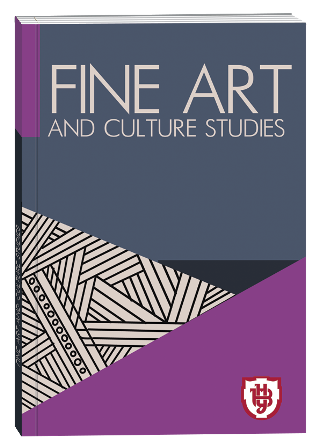SOLFEGGI IN THE EDUCATIONAL PRACTICE OF THE NEAPOLITAN CONSERVATORIES OF THE EIGHTEENTH CENTURY AS A FACTOR IN THE FORMATION OF THE STYLE OF BEL CANTO
DOI:
https://doi.org/10.32782/facs-2022-1-26Keywords:
solo singing, canto figurato, bel canto, solfeggi, zibbaldoni, Napoli conservatory, tipical melodic schemata, Galant styleAbstract
The purpose of the work. The work is devoted to the problem of formation of bel canto vocal technique and new aesthetics of singing, which gave rise to the phenomenon of opera of the XVIII century. The content of collections of vocal exercises – solfeggi – are considered as the basis of a comprehensive practice of improving singing voices while studying in the classes of the Neapolitan conservatories of the XVIII century.
Methodology. An integrated approach to the study of the material is used. Historical and theoretical researches of Gallant style, opera art of the XVIII century, academic activity of music classes of Neapolitan conservatories, teaching of solfeggio, partimento and counterpoint in these influential educational institutions of the epoch are considered. The method of performance analysis is used to study vocal exercises – solfeggi. Scientific originality. It is noted that the time, place and conditions of mastering the technique of "beautiful voice" still remain unclear in the literature. The system of music education in the classes of Neapolitan conservatories in the XVIII century were studied. It is determined that the boys' education was based on the systematic teaching of the disciplines of solfeggio, partimento, counterpoint and instrumental performance. Certain mechanisms of education of the vocal apparatus, embedded in the system of baroque vocal exercises, are analyzed. The educational materials preserved in the archives, documented in the student's notebooks – zibbaldoni, are considered. The role of castrates in the formation of new aesthetics of singing, the development of virtuoso and plastic abilities of singers, strengthening the atmosphere of professional competition were studied. Conclusions. It is revealed that all known sets of exercises are built with a professional understanding of methodological tasks and developed with the aim of gradually acquiring singing qualities, which later became known as characteristic features of the bel canto style. Based on the practical mastery of musical works of Neapolitan teachers-singers and composers – solfeggi, it was found that the practicing canto figurato was aimed directly at mastering vocal abilities of the singing apparatus, hearing development, skills of precise intonation, skillful breathing, vocal ornamentation` skills and simple intonations. It is substantiated that all the processes of "tension" and "weakening" of intonation and harmonic tendencies affect the development of changes in the dynamic and timbre shades of voice.
References
Барбье П. История кастратов. Перевод с французского Елены Рабинович. СПб.: Издательство Ивана Лимбаха, 2006. 304 с.
Бойко А. Вокальний стиль belcanto як провідний метод сучасної освіти. Наукові записки [Кіровоградського державного педагогічного університету імені Володимира Винниченка]. 2015. Сер.: Педагогічні науки. Вип. 139. С. 221-224.
Луцкер П., Сусидко И. Итальянская опера XVIII века. Ч. 1: Под знаком Аркадии. 1998. М., Государственный институт искусствознания, 440 с.
Луцкер П. В., Сусидко И. П., Итальянская опера XVIII века. Ч. 2.: Эпоха Метастазио. М., Классика-XXI. 2004. 768 с., ил., нот.
Митюкова З. Сольфеджио и партименто в итальянской музыкальной педагогике XVIII века. 2018. Журнал «Музыкальная академия». Вып. № 2 (762) С.167-174.
Симонова Э. Р. Итальянская школа bel canto XVII – XVIII веков. В сб. От барокко к романтизму. Музыкальные эпохи и стили: эстетика, поэтика, исполнительская интерпретация. 2010. Научные труды Моск. гос. консерватория им П. И. Чайковского. Сб. 65, вып. 2. С. 53-88.
Стахевич А. Г. Вокальное искусство Западной Европы: творчество, исполнительство, педагогика: исследование. 1997. Киев: Мрія–1 ЛТД. 272 с.
Baragwanath, N. How to solfeggiare the eighteenth-century way: A summary guide in ten lessons. 2017, Nottingham. https://www.nottingham.ac.uk/music/documents/2015/nick-baragwanath,-asummary-guide-to-solfeggiarethe-eighteenth-century-way.pdf
Baragwanath Nicholas. The Solfeggio Tradition: A Forgotten Art of Melody in the Long Eighteenth Century. New York, Oxford University Press. 410 p.
Clapton N. Carlo Broschi Farinelli: Aspects of his Technique and Performance. Journal for Eighteenth-Century Studies. 2005. V. 28. Р. 323-338.
Gjerdingen Robert. Music in the galant style. 2007. New York, Oxford University Press. 514 p.
Gjerdingen, Robert. Child composers in the old conservatories. How Orphans Became Elite Musicians. 2020. Oxford University Press. 355 p.
Sanguinetti G. Decline and fall of the «Celeste Impero»: the theory of composition in Naples during the ottocento. Studi Musicali. 2005. 2 (34). P. 451-502.







